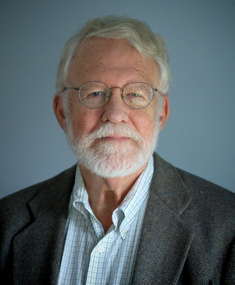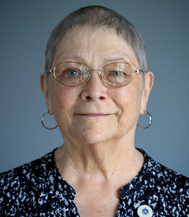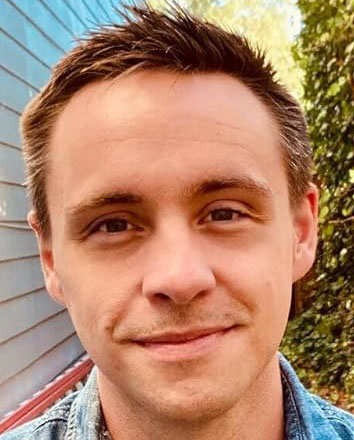Opening to Oneness: A Practical and Philosophical Guide to the Zen Precepts
Opening to Oneness: A Practical and Philosophical Guide to the Zen Precepts
Nancy Mujo Baker
Boulder, Colo.: Shambhala, 2022. 247 pp., paper, $21.95.
There are precepts without Buddhism but no Buddhism without precepts.
—Bernie Glassman
I remember standing next to swami in a Sunday School as he asked a little girl, “What is your name, dear?” She replied, “My name is Mary, but everyone calls me ‘Mary Don’t.’”
The first thing that struck me about Nancy Mujo Baker’s book is how she has chosen to present the precepts, the prime ethical injunctions of Buddhism. We always see precepts with “do not” or “thou shalt not.” Baker replaces the “not” with “non”: “Do not kill” becomes “non-killing,” and “Do not steal” becomes “non-stealing.” It is a transcendent invitation to merge the teachings from the precepts in our daily life.
Baker’s book consists of two parts. Part 1 is a workbook or study guide for students who will formally participate in jukai—the precepts ceremony—or for anyone who is studying to live by the Buddhist precepts. The book emphasizes practice. Baker writes that the Zen master Dogen “urges us to have our practice to be total, whole, undivided, sincere, authentic from moment to moment.” That means integrating the precepts in our language, thinking, reason, and action.
Part 2 of the book delves deeply into living with the precepts. This part consists of an inquiry, deeply influenced by Dogen’s teachings, to examine the “oneness of Zen and the precepts.” What is this “oneness”? According to Baker, “Dogen’s treatment of ‘suchness’ and the ‘nonduality of duality’” is at the heart of how Zen takes the precepts.
Baker has a unique three-step approach to look at why we fail to live with the precepts. First is to extend the narrow, literal meaning of the precept (“non-stealing doesn’t mean just money!”). The second step is to know ourselves in relation to the precept. It is a practice of no preference, no judgments, no shoulds or shouldn’ts, no ideas of failure. It is just seeing who we are and asking: am I a stealer, killer, or liar? Step 3, a natural outcome of the first two, is how the precepts begin to appear in our actions.
The Buddha taught that the only way we can be free of our sufferings and delusions is to face them and go through them, using them in the process. In the Zen tradition it is said, “If you fall down because of the ground, you must use the ground to get up.”
Baker mentions three things that have influenced her understanding of the precepts. First, being a retired philosophy professor, she has a great interest in languages and how we use words that can point to multiple meanings: “For example, in the case of second precept, non-stealing, we tend right away to reify it into a single meaning—say, ‘not taking what doesn’t belong to me’—when we could be asking, ‘Stealing what? Money? Time? Attention? The last cookie on the plate that doesn’t yet belong to anybody?’” The second thing that influenced her was teaching at a college that strongly emphasizes drawing out the deepest and best in students. Everyone is different, and everyone would relate to the precepts in a unique way. Our work with precepts is intensely personal. Unless we know what we are hanging on to, letting go is not possible.
The third source of Baker’s influence is A.H. Almaas’s psychospiritual Diamond Approach. The first step here is recognizing and truly acknowledging our conditioning without judgment. The second is the value of working with others in this inquiry of who we are. She says, “The Diamond Approach has taught me that learning to voluntarily open up with others is a very effective way to start ending the personal version of distinction between inside and outside, not to mention the self and other, and thus to experience an important aspect of oneness and true freedom.” Each chapter in Baker’s book ends with immensely useful partner or group exercises.
Learning to live with the Buddhist precepts is not just following or obeying some ethical guidelines. As we grow, we transition from good and bad to right and wrong. When we sit for meditation, where does “good and bad” come from? When we see clearly, our relationship with the precepts change. Instead of merely obeying the precepts, we become one with them. It is this level of living that Baker attempts to point out to us. It is the realm of the absolute. Dogen said, “When we sit Zazen, what precept is not observed, what merit is not actualized?”
I went back to read about non-stealing. We steal in so many subtle ways. When I say, “I’ll do this task later,” I am stealing time. When I do something with only a part of myself, I am stealing from the whole. When I am full of expectations, I am stealing from the future and missing the present. Such perspectives trigger a different realization. Zen master Bernie Glassman called these triggers that expand our awareness a “plunge.” Baker says, “Working with the precepts in the way mentioned in this book, and doing so in the presence of others, is a plunge.”
Why don’t we?
Dhananjay Joshi
The reviewer, a professor of statistics, has studied Hindu, Zen, and vipassana meditation for forty years. He reviews regularly for Quest.


 Imagination. What does that bring to mind? Something wonderful, mysterious, spectacular, or escapist? Or possibly a delusion, a trick, wishful thinking, or something false? Like so much else, It depends a good deal on our nature and nurture.
Imagination. What does that bring to mind? Something wonderful, mysterious, spectacular, or escapist? Or possibly a delusion, a trick, wishful thinking, or something false? Like so much else, It depends a good deal on our nature and nurture. The Theosophical worldview emphasizes the essential unity underlying existence. Its teachings advance the concept that every entity in the universe, from the smallest atom to the highest spiritual being, is on a journey of self-realization and ultimate reunion with the divine source—a holistic and cyclical view of the active cosmos and what may lie beyond.
The Theosophical worldview emphasizes the essential unity underlying existence. Its teachings advance the concept that every entity in the universe, from the smallest atom to the highest spiritual being, is on a journey of self-realization and ultimate reunion with the divine source—a holistic and cyclical view of the active cosmos and what may lie beyond. Set a timer, put pen to paper, and write. Let your hand dance across the page. Don’t second-guess its path. Whatever emerges is fine. Judge nothing. Pretty soon you’ll find the shrill cries of your inner critic fading. When the timer goes off, walk away and return in ten minutes. Scan the words for something that shines. Pan for gold. Usually you will find some.
Set a timer, put pen to paper, and write. Let your hand dance across the page. Don’t second-guess its path. Whatever emerges is fine. Judge nothing. Pretty soon you’ll find the shrill cries of your inner critic fading. When the timer goes off, walk away and return in ten minutes. Scan the words for something that shines. Pan for gold. Usually you will find some.